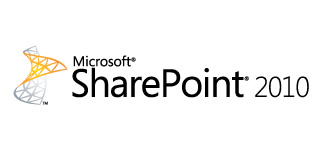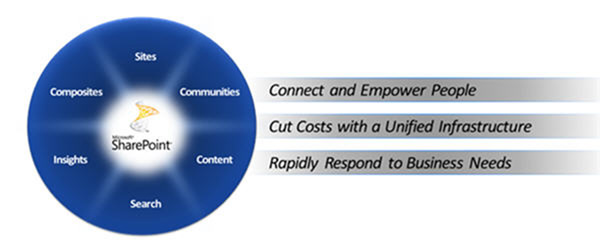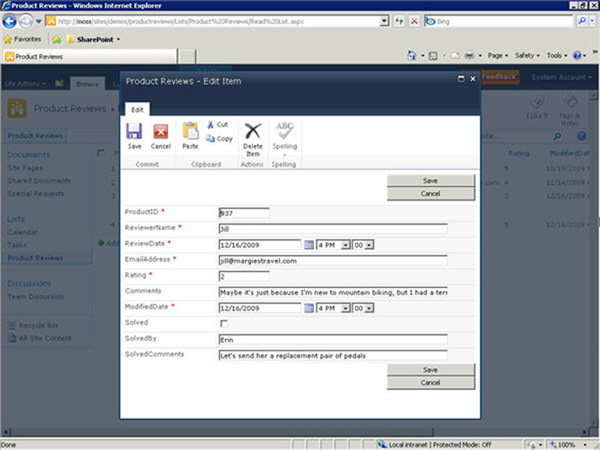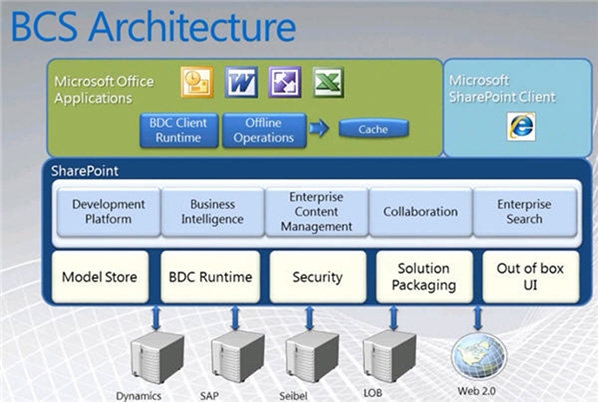MASAI Consulting
Microsoft SharePoint

SharePoint 2010 Review: The New 6 Pillars of SharePoint
There are a lot of changes in this latest version, much related to an improved user experience, some of it related to improved collaboration and business processes.
Three years ago Microsoft released SharePoint 2007 and the world exploded with SharePoint implementations. To say it was an improvement to SharePoint 2003 would probably be an understatement. The problem was SharePoint was really too easy to implement.
Many implementations came from the grassroots in organizations which led to improper planning, little to no governance, a file share mentality and more. What many organizations were often left with was a mess. Now keep in mind this mess was not really Microsoft's fault, if making software easy to implement and use is wrong, then we all need a reality check.
But SharePoint 2007 was far from perfect and to get it to work in many enterprise situations took a lot of time and many customizations. So like all software, a new version was needed to resolve many of these issues. It took them three years, but SharePoint 2010 has finally arrived.
Microsoft SharePoint 2010 is a Business Collaboration platform for the enterprise and the web. It crosses organizational boundaries and supports a number of activities, from workplace collaboration, to document management, to web content management and more. The 6 new pillars of SharePoint 2010 are explained below.
The 6 Pillars of SharePoint 2010

1. Sites
Essentially, everything you do in SharePoint is site-based. These sites can be accessible through your intranet, extranet or internet. They can be collaboration workspaces, business dasboards, portals, your public web presence. You also have personalisation via MySites, content targeting and tagging.
Perhaps the point here is that whether you are building an intranet, an extranet or an Internet site, the tools you need are similar. Personalization, collaboration, communities, social networking, content management — these things can be leveraged across any type of site you create.
Another important point to make here is that SharePoint 2010 is a platform that can support the growing number of mobile workers across an organization. This new virtual cube experience is supported through collaboration, content management and community capabilities. And SharePoint Workspace has arrived to support offline access (sometimes we do disconnect from the network).
2. Communities
Microsoft has taken the social aspects of SharePoint 2007 and made them a lot better. MySites actually becomes a very useful component, Profiles are rich, there's a newsfeed — or activity feed — to keep you in the loop.
Communities are really special collaboration sites, if that helps you envision them better. They are not exactly like the communities you may be use to in solutions like Telligent, NewsGator or Jive, but the social computing capabilities are much better than 2007.
3. Content
In many ways, this pillar should really just be renamed Document and Records Management, but there's two many words to fit on the new SharePoint wheel. Maybe this is where the enhancements have really taken SharePoint from a departmental, or SMB solution to a real enterprise option.
There have been massive improvements to metadata creation and management, and taxonomy. You can set retention policies on content types, which can, by the way, be created globally. The amount of documents that can be added to SharePoint 2010 has increased significantly and the support for external data storage makes it that much better. You've got in place records management, a record management center, auditing and version control, and much more.
4. Search
With the acquisition of FAST and its integration into SharePoint 2010, search has improved a great deal. Of course FAST Search for SharePoint is not the default search option. That, too, however has seen a number of improvements.
5. Insights
SQL Server 2008 R2 has added a number of self-service business intelligence capabilities, including some new functionality that works for SharePoint 2010. This is business intelligence for the information worker including dashboards, scorecards, reports and more.
You now have PowerPivot for SharePoint and Reporting Services 3.0. To take the business intelligence capabilities to the next step, Microsoft has added Performance Point Server to the SharePoint platform, renaming it PerformancePoint Services for SharePoint.
6. Composites: Integrating Your Business Systems
Remember, SharePoint is a platform. And with SharePoint 2010 comes a rich API and the new Business Connectivity Services. It has become much easier to integrate data from your line of business systems, mixing in a little collaboration, a rich security model, upcoming support for CMIS.
These composite applications can be built without diving into the world of developer code as well using tools like InfoPath, SharePoint Designer 2010 and Visio 2010.

SharePoint 2010's Business Connectivity Services (BCS) — Tying Information Together
Using SharePoint you can create web-based forms that update SharePoint databases or update external databases. These forms can even feed into Word or Excel documents — the disparate data can become a composite right inside your MS Office applications, or in your browser.
Data integrations are key for management dashboards and project management, but also for employees who may not need full access to the business application. It's important to note that SharePoint 2010 can both view and update external data via its Business Connectivity Services (BCS).

SharePoint 2010 — Business Connectivity Services
One thing we've all learned about enterprise collaboration tools is that for them to succeed, they need to be integrated with the productivity tools we already use on a daily basis. By tying SharePoint closely to things like MS Office 2010 and with email clients like Outlook, Microsoft is working to improve the probability of employee adoption of these new tools.
Socialize with us